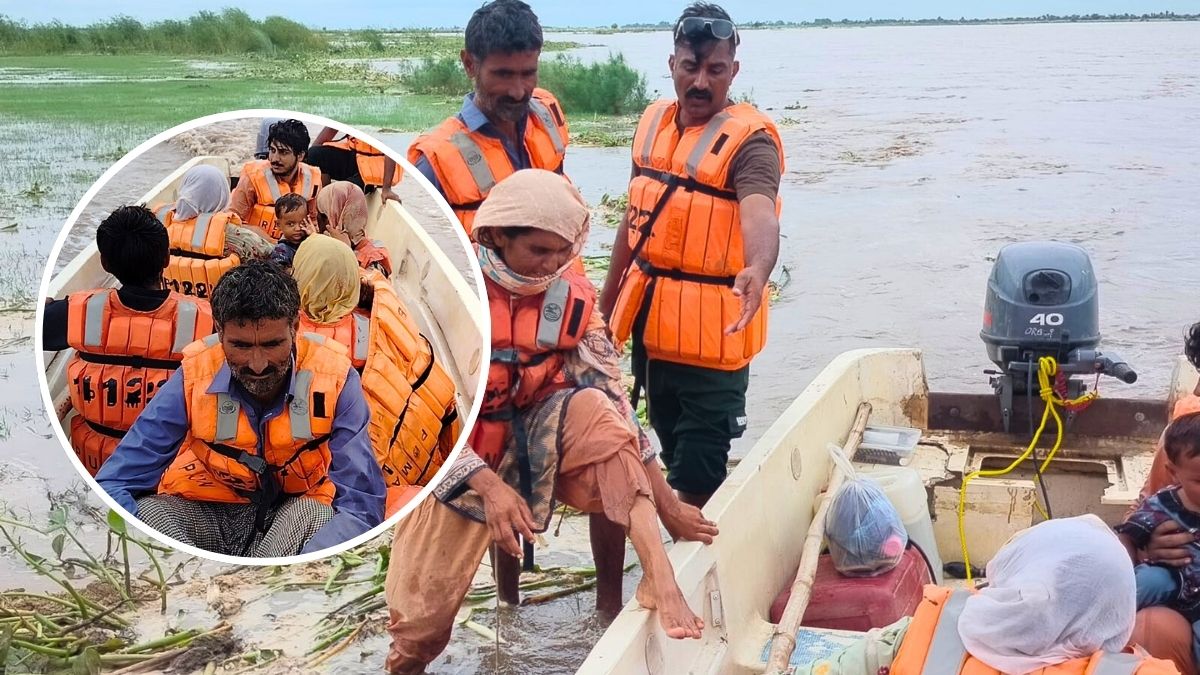In a show of humanity, India alerted Pakistan about possible cross-border flooding, after which the latter evacuated tens of thousands from its eastern border regions. This came after New Delhi released water from overflowing dams into swollen rivers, setting off fresh fears of cross-border flooding.
The development, officials say, not only adds to the humanitarian toll of this monsoon season but also marks the first public diplomatic contact between the nuclear-armed rivals in months, since the April 22 Pahalgam attack and India’s retaliatory Operation Sindoor.
Why did India release water into Pakistan?
New Delhi alerted Islamabad about the release of excess water, warning of a surge across the border. Indian officials said rivers in Jammu and Kashmir were already overflowing, inundating homes, damaging bridges, and leaving hundreds displaced. The water release was aimed at preventing worse devastation upstream.
It has, however, left Pakistan rushing to evacuate vulnerable communities downstream.
Worth noting here is that the northern regions in India are not just witnessing swollen rivers but also falling prey to continuous flash floods, which have caused several deaths in Jammu, Uttarakhand and Himachal Pradesh as well.
How many people have been moved to safety?
According to Pakistan’s National Disaster Management Authority (NDMA), evacuations were underway in Punjab province. More than 14,000 residents were shifted from Kasur district, while 89,000 people were moved from Bahawalnagar, near the Indian border. Further, officials have urged people to stay away from rivers, streams, and low-lying areas.
Civilians have been advised to avoid unnecessary travel, and pay attention to alerts sent via mobile phones, television, and the NDMA’s disaster app.
What is the scale of this year’s monsoon disaster?
The monsoon has already left a devastating footprint across South Asia. Since June 26, over 800 people have died in Pakistan, many swept away by flash floods or trapped in collapsing homes.
In the northwest district of Buner, residents accused authorities of failing to issue warnings before a sudden cloudburst earlier this month killed more than 300 people. Officials, however, insisted the deluge was impossible to forecast, as many victims were living along natural water channels.
How does this fit into the history of Indo-Pak water disputes?
The flood warning was passed through diplomatic channels, not the Indus Waters Commission, which traditionally handles such alerts under the 1960 World Bank-brokered Indus Waters Treaty. India suspended cooperation under the treaty earlier this year after the killing of 26 tourists in Kashmir.
This sparked a chain of diplomatic downgrades and tit-for-tat missile strikes in May. Though US intervention secured a ceasefire, ties remain frozen between the two nuclear armed neighbors. Pakistan maintains that India cannot unilaterally revoke the treaty, which has endured two wars and a border conflict in 1999.
Is climate change making things worse?
Pakistan’s current flooding comes against a backdrop of heavier and more erratic rainfall patterns, which scientists link to climate change. The 2022 monsoon inundated a third of the country, killed 1,739 people, and caused billions in losses. This year’s abnormal rains have raised fears of a repeat disaster.
Experts warn that cloudburst events, swollen rivers, and excessive dam discharges are likely to intensify as the climate crisis deepens. With Pakistan’s monsoon season set to last through September, the NDMA remains on high alert.
